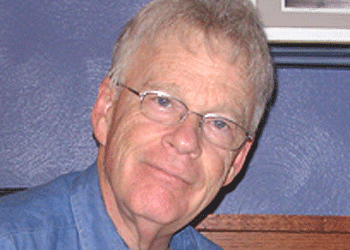In this week’s issue… Local studios still good business, say broadcasters – And next, ownership rules get reformed – Boston talent comes home – DePetro off the air – Remembering Frank Gottlieb
By SCOTT FYBUSH
*When the FCC took its long-expected vote last week to remove the main studio requirement for local radio and TV stations, it prompted an equally long-expected outpouring of expert opinion that soon enough, every radio station would uproot from its local community to operate from a server in a farm somewhere two time zones away – or so it seemed from the initial reaction to the decision.
We’ll dig into what the ruling really means in this week’s column, but we start with a reminder that for most small local owners, having a local studio is still what they’re all about, and that won’t change with this FCC ruling.
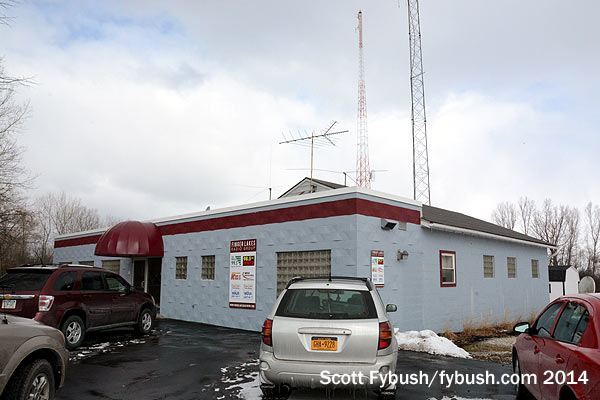
For example, Alan Bishop says he’s not planning any changes at his Finger Lakes Radio Group, just down the road from us in upstate New York: “For small market operators, being in or near the city of license has a direct impact on listenership and revenue,” he tells NERW. “At one time we had no presence in Auburn. We re-established that presence many years ago and saw the response to the stations and the revenue go up.
What will go away, we’re sure, are the studios that were “main” in name only. Entercom’s Buffalo cluster, for instance, has long paid WCJW in Warsaw to serve as a legal main studio for its WLKK (107.7 Wethersfield), which couldn’t legally have its main studio at the Entercom facility in Amherst, more than 25 miles away. No programming for WLKK ever originated from the Warsaw studios, and we doubt anyone ever showed up looking for the public file – and so it’s hard to imagine anybody even noticing that arrangement ending. iHeart’s two Rochester-market FMs (WVOR 102.3 Canandaigua and WNBL 107.3 South Bristol) that are more than 25 miles from downtown? They never originated programming from the storefront they had to lease in Canandaigua as a “main studio,” and in fairness never had much live content from iHeart’s Rochester studio either, which goes to show how toothless the old main studio rule was in the first place. (How many years has it been since Radio Disney pioneered the idea of a completely national network? Every minute of programming from coast to coast came from studios in Dallas and later Burbank, even if it was passed through local “main studios” in Boston and Hartford and so on…)
And since the rule was routinely waived for noncommercial networks, including giants like EMF’s K-Love, the end of the rule was welcomed heartily by commercial competitors such as New England’s Bill Blount, who’s had to maintain local offices in each of his single-station markets from Milford, Connecticut to Maine even though his programming is mostly centralized from New Hampshire.
Other “little guys” who may benefit are operators such as Bob Bittner, who’s had to bear the cost of “main studio” facilities in several markets even though his one-man stations have all really been run from his home base in Bath, Maine. There are plenty of Boston-market listeners who’ve found value in Bob’s WJIB (740) programming regardless of where it’s actually originated over the years, aren’t there?
*So what will the end of the main studio rule mean in the long term? Read on for some informed speculation…
SPRING IS HERE…

And if you don’t have your Tower Site Calendar, now’s the time!
If you’ve been waiting for the price to come down, it’s now 30 percent off!
This year’s cover is a beauty — the 100,000-watt transmitter of the Voice Of America in Marathon, right in the heart of the Florida Keys. Both the towers and the landscape are gorgeous.
And did you see? Tower Site of the Week is back, featuring this VOA site as it faces an uncertain future.
Other months feature some of our favorite images from years past, including some Canadian stations and several stations celebrating their centennials (buy the calendar to find out which ones!).
We still have a few of our own calendars left – as well as a handful of Radio Historian Calendars – and we are still shipping regularly.
The proceeds from the calendar help sustain the reporting that we do on the broadcast industry here at Fybush Media, so your purchases matter a lot to us here – and if that matters to you, now’s the time to show that support with an order of the Tower Site Calendar. (And we have the Broadcast Historian’s Calendar for 2025, too. Why not order both?)
Visit the Fybush Media Store and place your order now for the new calendar, get a great discount on previous calendars, and check out our selection of books and videos, too!
[private]
*OK, then, what about that imagined nightmare future in which “local” radio from coast to coast is coming out of a server farm with no local offices from which local voices can be heard? You wouldn’t be wrong if you suspected that at least a few bigger national players have already been thinking about how they could close down at least some local facilities.

On a technological level, it’s already entirely possible – when your morning show comes from Nashville, your midday jock is tracked from LA, afternoons are from New York and the rest of the day is just automated, it already doesn’t matter whether the server playing out that content is in the market or a thousand miles away, does it? (And we can think of a few “local” clusters across NERW-land where that’s describes most of the stations in the group, even while the main studio rule was in full effect.)
On one hand, the argument goes, the logical next step is to let the lease expire on that local real estate where those empty studios sit all day, leaving whatever sales and promotions staff is left to work from home or from some centralized facility in the next market over, while a regional roving engineer fixes any transmitter glitches. (And we’ll have more in this week’s Top of the Tower podcast on Wednesday about the brave new world of “virtual studios” that allow programming to originate from just about anywhere.)
Yes, some groups will try such a tactic, and some may even find some success with completely nationalized formats sold at a national level without much in the way of local sales and promotion. But then – isn’t that basically what “NASH” has been for Cumulus, with at best mediocre ratings and revenue results in most of its networked markets?
Alan Bishop of Finger Lakes Radio Group, again: “It’s expensive to maintain offices and studios in Geneva, Auburn and, soon, Penn Yan. We haven’t done it because of regulation. We have done it because it’s good business!”
Will most local operators in the region continue to see “good business” in keeping local studios open? We’d bet on it. And even for the cluster operators, there’s still enough local programming coming out of most of their local studios that it would seem to us that some sort of local facilities will continue to be a necessity for some time to come.
*What’s next from the FCC’s deregulatory majority? Chairman Ajit Pai is already planning a vote on revised ownership rules, but this one doesn’t look like it will make anyone completely happy. Pai’s proposal calls for an end to the antiquated newspaper-broadcast crossownership rule (remember our speculation a few weeks back about a Boston Herald-WRKO combination?) and to the TV-radio crossownership rules that have largely been waived anyway. But the hard-core deregulatory crowd won’t be happy that Pai isn’t proposing an end to the current overall ownership caps, or to the current sub-caps that limit an owner to a maximum of five AM or FMs in any given market.
 And CONNECTICUT‘s Jeff Warshaw has particular reason to be miffed: he’s been a proponent of eliminating one current quirk to the rules that counts embedded radio markets within the ownership cap of their larger parent market. That’s a particular problem for his Connoisseur group, which owns stations in the Stamford-Norwalk market and in Long Island’s Nassau-Suffolk market. Those stations don’t compete at all with the stations Beasley is rumored to be trying to sell in central New Jersey’s Middlesex-Somerset-Union market – but because all three of those markets are embedded in Arbitron’s New York market, Connoisseur is capped at eight signals total. And for now, it appears it will have to stay that way.
And CONNECTICUT‘s Jeff Warshaw has particular reason to be miffed: he’s been a proponent of eliminating one current quirk to the rules that counts embedded radio markets within the ownership cap of their larger parent market. That’s a particular problem for his Connoisseur group, which owns stations in the Stamford-Norwalk market and in Long Island’s Nassau-Suffolk market. Those stations don’t compete at all with the stations Beasley is rumored to be trying to sell in central New Jersey’s Middlesex-Somerset-Union market – but because all three of those markets are embedded in Arbitron’s New York market, Connoisseur is capped at eight signals total. And for now, it appears it will have to stay that way.
(We’ll have more thoughts on the ownership deregulation issue coming up in the Top of the Tower podcast this week…)
*You may have read some of the stories about how NEW YORK‘s WNYC has been helping fellow public broadcaster WIPR in Puerto Rico recover from the devastation of Hurricane Maria, but did you know there’s another NERW-land connection here, too?
WNYC sent two of its engineers, Dannie Raghunath and Peter Polanco, down to Puerto Rico last week along with an emergency “RadioToGo” kit – an FM transmitter, basic studio gear and antenna – provided by CoastAlaska public broadcasting, which developed the boxes to assist its small stations in remote areas to survive emergencies. The extra NERW-land connection here comes in the form of the engineer in Juneau who got the kit together and shipped off to New York en route to Puerto Rico. That’s none other than Rich Parker, who worked for years at WHYY in Philadelphia and then ran the engineering shop at VERMONT Public Radio before moving on to Alaska a few years back. (It was during Rich’s VPR days that Fybush Media worked closely with him to help develop what became today’s VPR Classical service.)
Our editorial hat is off, in any event, to Rich and the WNYC folks for providing the help WIPR required to get an FM signal back on the air in San Juan at a time when its service was most desperately needed.
*Univision’s WXNY (96.3 New York) is picking up an afternoon show from its sister station in Miami. Jackie Guerrido’s “El Jangueo” show originates down there at WRTO (98.3), and features co-hosts Tony Banana and “El Primo.”
*On TV, Spectrum’s NY1 has launched a new “Mornings on 1” show that’s far more personality-based than its usual news wheel. Veteran anchor Pat Kiernan remains at the center of the show. Upstate, meanwhile, Spectrum News is losing Albany-based anchor Kate Welshofer, who’s headed back here to western New York to join the staff of Buffalo’s WGRZ (Channel 2) in 2018. (Disclaimer: we toiled together at what was then Time Warner Cable’s R News a couple of decades ago…)
There’s some TV news being made here in Rochester, too: Nexstar’s WROC-TV (Channel 8) debuted a slick new studio rebuild on Wednesday, and we’ll take you on a tour of that facility soon. Sinclair’s WHAM-TV (Channel 13) is right behind, with its newscasts coming from its newsroom while a set rebuild is in progress – and at Hubbard’s WHEC (Channel 10), it’s a new face on a recently-redone set, with Jeremy Kappell joining the station this past week as chief meteorologist, a role last held by Kevin Williams. In a town that likes local talent, will viewers warm to Kappell, who comes from WDRB in Louisville, Kentucky?
 *Back to radio: Sunrise Broadcasting has been tweaking its format lineup in the Hudson Valley again – at some point (we think fairly recently), WGNY (1220 Newburgh) and its 105.3 translator dropped the country format they’d been running since February, instead picking up a simulcast of “Fox Oldies” from sister station WGNY-FM (98.9 Rosendale) to the north.
*Back to radio: Sunrise Broadcasting has been tweaking its format lineup in the Hudson Valley again – at some point (we think fairly recently), WGNY (1220 Newburgh) and its 105.3 translator dropped the country format they’d been running since February, instead picking up a simulcast of “Fox Oldies” from sister station WGNY-FM (98.9 Rosendale) to the north.
*On Long Island, Texas-based Centro Cristiano de Vida Eternal has been granted a big move for its translator, W296CQ (107.1), which will move west from Hauppauge to Melville with 140 watts, covering a much more densely-populated part of western Suffolk County and parts of eastern Nassau County, too. The translator is on the books now as a relay of WBZO (103.1 Bay Shore), but we’d expect that to change at some point.
*Radio People on the Move in MASSACHUSETTS: Remember Annalisa? The Boston-area native started in radio at WBIM (91.5) at Bridgewater State and then went on to WAAF (107.3) and the morning show at WZLX (100.7). For 20 years, from 1996 until her departure last year, Annalisa was out west at the legendary KFOG (104.5) in San Francisco, where she became a midday fixture. Now she’s returning to Boston as the new afternoon jock at WXRV (92.5 Andover), where she takes the spot recently vacated by Matt Phipps.
“I was raised on Boston radio, was lucky enough to start in Boston radio and am excited to be welcomed back to it at the River,” she said in the announcement of her return. “It was important to me that I work at a radio station that respects their listeners, loves the community and loves to share their passion for music. The River stands out as an
independent station in a cookie cutter corporate radio world.”
*Over at Beasley’s WKLB (102.5 Waltham), Marissa Lanchak has signed on as the new night jock. She’s been a fixture at the other end of the Pike in the Albany market, where she’d most recently been doing middays at WGNA (107.7) for Townsquare.

*Out on Martha’s Vineyard, WMVY had been on the air for only a few years when Barbara Dacey came on board in 1985 as a part-time DJ. By 1993, she was WMVY’s program director, and in the years that followed she helped build the station into an important player in the AAA format, not to mention an essential part of life on the Vineyard. Dacey was instrumental in keeping WMVY alive after its commercial 92.7 FM signal was sold off in 2013, first as a webstream and then back on the air in its current noncommercial incarnation at 88.7 on the dial.
Last week, Dacey announced she’s stepping down from her roles as director of worldwide programming, midday host and board member at Friends of MVYRadio, the parent organization at WMVY. No successor has been named yet.
*Langer Broadcasting’s WSRO (650 Ashland) wants to get its translator closer to Boston. Currently licensed with just 40 watts from its AM transmitter site in Framingham, W271CU (102.1) is applying to relocate to Bear Hill in Waltham with 250 watts – and a complex directional antenna that would protect WSAK (102.1 Hampton NH) to the northeast and another Boston-area translator, W271CG on 102.1 to the southeast.
*We send our deepest condolences to our friends at WBZ (1030), who are mourning the death over the weekend of Jake Germano, an up-and-coming producer at the station. He and a friend were killed in a car crash in Rindge, N.H. on Saturday.
*Brian Stratton was just 49 when he died on Tuesday, and his passing leaves a big void in the South Shore music community, where he was well known as a producer, promoter and as a musician in his own right. Stratton did production at WATD (95.9 Marshfield) and hosted a weekly talk show there, “Friends with Benefits.”
*In RHODE ISLAND, Doug MacGunnigle has been promoted to assistant PD at Cumulus’ WPRO (630)/WEAN (99.7), where he’d been producer and digital content director. MacGunnigle started at WPRO in 2002 (and also worked on-air at sister stations WPRO-FM and WWKX) before crossing town to WHJJ (920) in 2011; he returned to WPRO in 2015.
 Meanwhile to the south, John DePetro’s done at WADK (1540 Newport), but he says he’s not leaving radio. The oft-controversial talk host landed in afternoons at the Newport station back in January (with a simulcast on WNRI 1380 in Woonsocket) after an on-and-off decade with WPRO. DePetro tells the Providence Journal he’ll be making an announcement this morning about his next radio gig, and we’ll update here accordingly.
Meanwhile to the south, John DePetro’s done at WADK (1540 Newport), but he says he’s not leaving radio. The oft-controversial talk host landed in afternoons at the Newport station back in January (with a simulcast on WNRI 1380 in Woonsocket) after an on-and-off decade with WPRO. DePetro tells the Providence Journal he’ll be making an announcement this morning about his next radio gig, and we’ll update here accordingly.
Monday morning update: DePetro is moving his home base to WNRI, where he’ll be heard weekdays from 11 AM-2 PM starting today.
*We begin our PENNSYLVANIA coverage by remembering Frank Gottlieb. The Beaver County native and Vietnam veteran started his news career at the old WAMO (860), was a newswriter and producer at WTAE-TV and KDKA-TV, then went on to work in Columbus, Ohio at QUBE interactive cable TV and WCMH (Channel 4) before coming back home to spend the last 27 years of his career, at KQV (1410). As news director at KQV, Gottlieb was a stickler for old-fashioned newsroom values in a world that was changing quickly around him. He was also a passionate historian of Pittsburgh media. Gottlieb became news director at KQV in 1993 and retired from the station in 2012; since then, he’d been an avid traveler, including a cross-country trip earlier this year. He’d been ill with the flu recently; he was 72 when he died Tuesday (Oct. 24).
*Two new LPFMs have filed for licenses to cover at opposite ends of the state. In Philadelphia, the Greater Philadelphia Asian Culture Center’s WQEW-LP (98.5) has assumed its half of a time-share there. (Its time-share partner, WJYN-LP, has been using the channel fulltime for the last year or so with its urban format and will now cut back to its 3 PM-3 AM schedule, giving WQEW the morning hours.)
In Erie, Hand Up Inc.’s WUTT-LP (95.5) filed for its license to cover, too; it will apparently be running an urban format serving Erie’s west side.
*And we wish a very happy 30th anniversary to “Radio Times,” the local talk show that’s become a fixture on WHYY (90.9 Philadelphia)’s morning lineup. Philadelphia magazine interviewed host Marty Moss-Coane about her long tenure there last week, which she described as “such a lucky, happy accident. There’s a certain pleasure about doing what you’re put on this planet to do. Radio is made for me,” she said.
*There’s a license to cover for a NEW JERSEY LPFM, too: Caribbean Sports International’s WZYE-LP (95.9 Maplewood) is part of a three-way time-share on that frequency, operating Monday, Wednesday and Friday mornings, Tuesday, Thursday and Saturday afternoons and from midnight to 3 AM daily.
*We’re starting to see DTV stations leave the air as a result of the spectrum auction and impending repack. Family Stations’ WNYJ (Channel 66/RF 29) got $121 million from the FCC to give up its spectrum and didn’t enter into a channel-share deal to put its programming (mostly leased time to international news networks) on anyone else’s spectrum – so now the former WFME-TV is off the air for good. (And how things have changed for Family Stations in the years since it was forced to sell off WFME’s old 94.7 facility to help pay the network’s debts after founder Harold Camping’s botched end-of-the-world prediction – between the money it brought in from selling 94.7, Philadelphia’s WKDN 106.9 and now the TV spectrum, the network now appears to be in quite stable financial shape.)
In the Harrisburg-Lebanon-Lancaster-York market, the RF 30 signal of independent WGCB-TV (Channel 49) is dark now, with the MeTV affiliate having started its channel-share with Nexstar’s WHTM (Channel 27/RF 10). OTA Broadcasting is selling the WGCB license and its physical tower assets, to Red Lion 49 Media, LLC and Rocket Dog Media, LLC, respectively, for a total of $2.25 million.
The auction-driven shutdown also claimed three low-power stations in the Pittsburgh market, where OTA Broadcasting collected $74 million from the spectrum of the old Bruno Goodworth Network signals. WEPA-CD in Pittsburgh signs off Wednesday, as does WNNB in Beaver and WPCP in New Castle; five other signals that had been fed from WEPA will go dark for now but could return with new programming and ownership.
*And we know now how much NBC is paying for little WYCN-CD (Channel 13) from Nashua: OTA will get $225,000 for the license, which has surrendered its RF spectrum and will be channel-sharing (but just one SD service) on public broadcaster WGBX (Channel 44).
 *In CANADA, Fitzroy Gordon’s CKFG (98.7 Toronto) is getting an unwelcome summons from the CRTC, which is calling the station to a license hearing January 11. The CRTC says the station has failed to meet a laundry list of license obligations in its first term on the air, including Can-Con rules, music logs, annual reports and a requirement to report on how “G98.7” is serving Toronto’s Caribbean and African communities with its music and spoken-word programming.
*In CANADA, Fitzroy Gordon’s CKFG (98.7 Toronto) is getting an unwelcome summons from the CRTC, which is calling the station to a license hearing January 11. The CRTC says the station has failed to meet a laundry list of license obligations in its first term on the air, including Can-Con rules, music logs, annual reports and a requirement to report on how “G98.7” is serving Toronto’s Caribbean and African communities with its music and spoken-word programming.
Think the CRTC’s not happy? “The Commission could conclude that the licensee has demonstrated that it does not understand its regulatory obligations,” it writes. “Because of this, coupled with the fact that the Commission has already required corrective measures by the licensee during the current licence term with which the licensee does not appear to have complied, the Commission has concerns regarding the licensee’s ability and commitment to operate the station in a compliant manner.”
We’ll be watching closely to see whether Gordon’s Intercity Broadcasting Network, Inc. can find a way to satisfy the CRTC’s concerns and keep its license.
[/private]
GROW WITH US! Fybush Media and RadioInsight have joined forces to provide a bigger ad sales platform for the broadcast and streaming industry. Are you the right fit to become our next sales professional? We’re seeking someone creative and energetic who knows his or her way around the radio, TV and streaming community. Generous commission and profit-sharing. Want to join our team? Let’s talk.
Fybush.com isn’t a mere website.
We’re a community.
And we take care of our community members. Do you have a piece of equipment you want to sell? Or one you want to buy? Are you looking for a job? An employee? We can help you with all of those searches and more! We offer classified ads at reasonable prices, seen by people in every part of the industry. Contact Lisa for details.
From the NERW Archives
Yup, we’ve been doing this a long time now, and so we’re digging back into the vaults for a look at what NERW was covering one, five, ten, fifteen and – where available – twenty years ago this week, or thereabouts.
Note that the column appeared on an erratic schedule in its earliest years as “New England Radio Watch,” and didn’t go to a regular weekly schedule until 1997.
One Year Ago: October 31, 2016
*The wheels of justice may grind exceedingly slowly, but they’ve at least finally ground out some small form of vindication for those who’ve followed the long, strange tale of Brian Dodge.
 We’ve been reporting on the New England broadcaster and his antics for most of the 22 years we’ve been writing this column, observing what have appeared to be repeated violations of FCC rules ranging from the use of fake names in filings to unauthorized transmitter sites and power levels to blatant violations of LPFM multiple ownership rules. We’ve been reporting on the New England broadcaster and his antics for most of the 22 years we’ve been writing this column, observing what have appeared to be repeated violations of FCC rules ranging from the use of fake names in filings to unauthorized transmitter sites and power levels to blatant violations of LPFM multiple ownership rules.
All the while, it had appeared that the Commission was turning a blind eye to most of the problems, allowing Dodge and his many aliases to clog the tubes of bureaucracy with repeated sloppy applications that sometimes blocked other, more responsible broadcasters from making their own legitimate moves.
Well, guess what? It turns out the FCC was paying attention all along – and on Thursday, it released a consent decree that it reached with Dodge to settle some matters that had been left hanging for literally decades.
Under the agreement, Dodge will surrender a number of his licenses and CPs, including WCKL (560 Catskill NY) and LPFMs in Westhampton MA (WDOE-LP 97.5) and Williamsburg MA (97.9). He’ll be granted a license for WWNH (1340 Madbury NH), which operated from 1989 until 2010 under program test authority but was never actually licensed. And he’ll be granted license renewals for three translators in New Hampshire and Vermont whose sales had been pending for most of the year.
Those renewals mean the sales of the translators (two to Costa-Eagle, for $150,000 total and one to RHODE ISLAND‘s WNRI 1380, for $75,000) will be allowed to proceed – but $100,000 of that $225,000 will go straight to the FCC as a “voluntary contribution” from Dodge that’s part of the consent decree.
*It’s only fitting that our NEW YORK news on this Halloween begins with the death of John Zacherle, who combined high camp and ghoulish scares in a career that stretched for many decades on radio and TV.
After serving in World War II, Zacherle did theater in Philadelphia, which led him into early TV with appearances on WCAU-TV (Channel 10), which led to his 1957 debut as horror movie host “Roland” (pronounced “roh-LAAAND,” of course.) And that quickly led to an even bigger hosting gig at New York’s WABC-TV (Channel 7), where “Zacherley, the Cool Ghoul” became an institution. Over the course of the next decade, Zacherle moved to WOR-TV (Channel 9), WPIX (Channel 11) and then to newcomer WNJU (Channel 47), where he somehow became a horror host who emceed an afternoon teen dance party show.
And that, in turn, led to a radio career, starting at WNEW-FM (102.7), then most famously at WPLJ (95.5), and finally at WXRK (92.3) for a few years in the 1990s. Along the way, Zacherle continued to appear in movies and at conventions well into his 90s. He was 98 when he died last Thursday in Manhattan.
Five Years Ago: October 29, 2012
The power and phone service are slowly being restored to parts of lower Manhattan after the devastation Sandy wreaked across the city’s infrastructure, and that’s good news for many of the broadcasters who call that area home. WOR returned to its 111 Broadway studios on Friday, and power came back on at its New Jersey transmitter site, too. The news was not so good for WMCA (570) and WNYC (820); their shared transmitter site in Kearny, N.J. had about 18 inches of water inside the building, and that means equipment damage that will take some time to replace. WNYC director of engineering Jim Stagnitto tells NERW 820 might be back on the air late this weekend if all goes well.
(New York had another big story overnight: at midnight, Suzyn Waldman launched CBS Radio’s new WFAN-FM on 101.9, a nod to the day 25 years ago when hers was the first voice heard on WFAN in its original incarnation at 1050 on the dial.)
Many of the Connecticut and Long Island signals that were silenced by power outages made it back on the air Thursday, including WLUX (540 Islip), WICC (600 Bridgeport) and WGCH (1490 Greenwich). We’ve been remiss, too, in not noting the simulcast of News 12 Long Island that went on for several days nonstop on WHLI (1100 Hempstead), which stayed on the air past its usual daytime-only hours to help keep Long Island informed.
The scope of the devastation along the Jersey shore is still not fully accounted for, at least from a broadcast perspective, but we know of at least one signal that won’t be back any time soon: Stagnitto tells us the transmitter of New Jersey Public Radio’s WNJO (90.3 Toms River) is “somewhere out at sea” after the Seaside Park community where it was located was hit by the worst of the storm surge.
Ten Years Ago: October 14, 2007
*The urban radio war in CONNECTICUT‘s biggest market is over, and CBS Radio’s WZMX (93.7 Hartford) is the survivor. Thursday morning at 10, Clear Channel pulled the plug on the “Power 104” hip-hop format at WPHH (104.1 Waterbury), a little more than four years after it went up against “Hot 93.7.”
While WZMX had an all-local lineup, WPHH used syndicated talent in morning and afternoon drive (Steve Harvey and Wendy Williams, respectively), and its ratings never quite measured up to its CBS competitor, even before the eventual arrival of the Portable People Meter in the market, with all the ratings headaches it’s brought to urban formats in the markets where it’s already launched.
 So just as it did in Philadelphia, where Clear Channel killed off Spanish tropical “Rumba 104.5” in favor of modern rock “Radio 104” at WRFF (104.5), Clear Channel went to a modern rock format on the newly-renamed “FM 104one” in Hartford. And therein lies an irony: the “Radio 104” image that landed in Philly came right out of the old WMRQ in Hartford – an image valuable enough, apparently, that Clear Channel was keeping the old Radio 104 website alive in Hartford years after the format change to “Power,” complete with an automated webstream. (That site quietly went away after the “FM 104one” launch last week, replaced by a page that forwards to the new WPHH site.) So just as it did in Philadelphia, where Clear Channel killed off Spanish tropical “Rumba 104.5” in favor of modern rock “Radio 104” at WRFF (104.5), Clear Channel went to a modern rock format on the newly-renamed “FM 104one” in Hartford. And therein lies an irony: the “Radio 104” image that landed in Philly came right out of the old WMRQ in Hartford – an image valuable enough, apparently, that Clear Channel was keeping the old Radio 104 website alive in Hartford years after the format change to “Power,” complete with an automated webstream. (That site quietly went away after the “FM 104one” launch last week, replaced by a page that forwards to the new WPHH site.)
*In other Nutmeg State news, Antonio Gois’ Gois Communications is paying $2.65 million to buy Spanish tropical WLAT (910 New Britain) and Spanish news-talk WNEZ (1230 Manchester) from the bankrupt Freedom Communications. Gois is no stranger to the Connecticut River valley; he sold WSPR and WACM in Springfield to Davidson a couple of years ago, and he still owns WORC (1310) over in Worcester. He’ll take over the Hartford-market stations via an LMA November 1.
*The big ownership shuffle that clears Clear Channel out of the Utica/Rome market closed Thursday, and the new owners wasted no time rearranging much of that area’s radio dial. Here’s how it’s all playing out so far:
 Galaxy Communications bought the Clear Channel stations, and the big prize that it’s keeping is classic rocker WOUR (96.9 Utica), which moved from Clear Channel’s downtown Utica studios on Genesee Street to Galaxy’s New Hartford studios. For the moment, we’re hearing that the syndicated Bob & Tom show remains in morning drive, with Galaxy talent from Syracuse voicetracking the rest of the day. Galaxy Communications bought the Clear Channel stations, and the big prize that it’s keeping is classic rocker WOUR (96.9 Utica), which moved from Clear Channel’s downtown Utica studios on Genesee Street to Galaxy’s New Hartford studios. For the moment, we’re hearing that the syndicated Bob & Tom show remains in morning drive, with Galaxy talent from Syracuse voicetracking the rest of the day.
Galaxy also gets hot AC WUMX (102.5 Rome), which is running automated outside of its syndicated drivetime shows, as well as sports talkers WRNY (1350 Rome) and WIXT (1230 Little Falls), which will end up as a sports simulcast with Galaxy’s WTLB (1310 Utica), flipping from standards.
Galaxy immediately spun several other Clear Channel signals to Ken Roser, who’s made no changes yet to top 40 “Kiss” WSKS (97.9 Whitesboro)/WSKU (105.5 Little Falls). Roser also gets the other two signals that had been part of the “Sports Stars” simulcast, and we’re told WUTQ (1550 Utica) and WADR (1480 Remsen) will end up simulcasting Roser’s “Bug Country” WBGK (99.7 Newport Village), at least for the moment. (Will Roser end up with Clear Channel’s Mayro Building studios, or will Kiss and the AM signals move up Genesee Street to the Bug studios? We don’t yet know.)
*In western PENNSYLVANIA, the simulcast of WBXQ (94.3 Patton) and WBRX (94.7 Cresson) has come to an end after 16 years. While 94.3 keeps its classiic rock format and longtime “Q94” identity, 94.7 has flipped to AC as “Mix 94.7,” using a Jones satellite service for now.
Fifteen Years Ago: October 28, 2002
It’s been ten months since Christian contemporary station WWJS (90.1) in Watertown, NEW YORK went silent, the victim of a nasty spat between owner Charles Savidge and his father-in-law, Rev. Robert Bryant, who owns the Liberty Christian Center that was the station’s home. And with the FCC’s strict rule about deleting stations that remain dark for a full 12 months, the deadline was fast approaching for something to happen with this frequency up there. And while it looked a little iffy (and sparked a new battle between Savidge and Bryant), WWJS made it back to the airwaves last Wednesday (Oct. 23), according to NERW North Country bureau chief Michael Roach. Actually, WWJS would have been back a few days earlier — but, Roach reports, Bryant hired workers to go to the WWJS transmitter site east of town on Champion Hill (also home to WWNY-TV and WTOJ 103.1) to remove, yes, the transmitter!
But the mess has caught the attention of Watertown’s other broadcasters, and in stepped David Mance, owner of WTOJ (as well as WBDI/WBDR, WATN and WOTT), who’s letting Savidge use one of his auxiliary transmitters for the moment. Expect another round (or three or six) of lawsuits, including one in which Bryant is apparently claiming that he owns the WWJS call letters! (NERW notes: there’s no trademark on “WWJS,” and nobody actually owns call letters, according to established case law.)
Elsewhere in the Empire State, Sunrise Broadcasting has moved another step forward in its attempt to get something back on the air at 1200 kHz in the Hudson Valley. You may recall that Sunrise’s WGNY in Newburgh occupied that channel under special temporary authority for most of the 90s, in an attempt to win a permanent upgrade from its longtime spot at 1220 on the dial. But the upgrade of New York’s WLIB on 1190 doomed a fulltime 1200 signal in Newburgh, and WGNY had to slide back to 1220 a few years back. But Sunrise didn’t give up, and now its application for a new station on 1200 in Kingston, some 40 miles north of Newburgh, has been accepted for filing at the FCC. The new 1200 would run 2000 watts day from two towers and 400 watts night from five towers, which would require a rebuild of the existing WGHQ (920) site off Route 9W just south of Kingston.
Twenty Years Ago: October 30, 1997
It’s an early Halloween for pirate broadcasters in New England, and they’re not getting any treats from the FCC. On Tuesday afternoon, FCC agents visited Radio Free Allston (106.1) at its studios in an Allston art gallery, as well as Worcester pirate WDOA (89.3), ordering the stations off the air and threatening fines and jail time if broadcasts continued. RFA founder Steven Provizer was manning the board at the station when the agents arrived. He says they photographed RFA’s equipment and transmitter readings but did not confiscate anything, and he’s promising a renewed fight in court to make RFA legitimate. Provizer says the FCC told him it had received complaints from a licensed broadcaster (he says it’s WROR (105.7) that made the complaint). Other area pirates aren’t waiting for the FCC to come trick-or-treating; they’ve voluntarily suspended operations while waiting for things to quiet down. The web page for Rebel Music Radio in Boston (105.3) displays only color bars and the words “Sorry it had to happen…we’re off the air.” Also off the air is Radio Free Chelmsford, 88.3, according to its web site.
The battle between the pirates and the FCC is far from over; Provizer is already getting assistance from the ACLU in his case and he’s promising to see things all the way through in court. We’ll keep you posted…
In other news from MASSACHUSETTS this week: Keating Willcox’s Willow Farm Broadcasting has closed on its purchase of WPEP (1570 Taunton); staying at the station are George and Donna Colajezzi and their local morning show. A follow-up to last week’s mention of the sale of WBET (1460) and WCAV (97.7) in Brockton: new owner KJI Broadcasting has the same ownership as Pittsfield’s WBEC (1420/105.5) out in the Berkshires.
One of CONNECTICUT’s largest broadcast groups is for sale. At a staff meeting Tuesday morning, Capstar employees were told the company’s Fairfield radio group is on the block. Capstar’s Connecticut properties include news-talk trimulcast WSTC (1400 Stamford)/WNLK (1350 Norwalk)/WINE (940 Brookfield), oldies WKHL (96.7 Stamford), classic rock WEFX (95.9 Norwalk), and rocker WRKI (95.1 Brookfield). Rumor has Clear Channel eyeing the stations to add to its own 2AM-1FM group in nearby New Haven.
In NEW HAMPSHIRE, the simulcast between WJYY (105.5 Concord) and WNHQ (92.1 Peterborough) started last Friday, more than a week ahead of schedule. Up in Manchester, WKBR (1250) has flipped back to the One-on-One Sports format, supposedly for good this time. WKBR was apparently having trouble getting a clear satellite signal from One-on-One; they’ve built a new dish to fix that problem.
Could little WGOT (Channel 60) in Merrimack become Boston’s latest network O&O? WGOT owner Lowell Paxson is talking about using his own group of UHF stations to create a seventh network. Labelling WGOT as the “Boston” affiliate would be a bit of a stretch; while the station has cable carriage through the northern half of the market and a translator (W54CN) in Needham, its over-the-air signal is weak to nonexistent in Boston proper. Paxson also controls WHRC (Channel 46) in Norwell, Mass. through an LMA; it too might become part of the network. Elsewhere in the region, Paxson stations include WTWS (Channel 26) New London CT, WPXN-TV (Channel 31) New York, WHAI-TV (Channel 43) Bridgeport, and the not-yet-built WAQF (Channel 51) Batavia-Buffalo.
Also making network noises is Barry Diller’s Silver King group, which includes WHSH (Channel 66) Marlborough-Boston, WHSE (Channel 68) Newark-New York, and WHSI (Channel 67) Smithtown, L.I. With Diller’s acquisition of the USA network this week, there’s growing speculation that he’ll use the Silver King stations as the core of a new broadcast network (in addition to his CityVision local programming plans). |






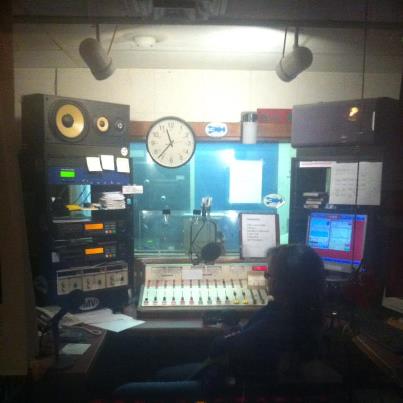
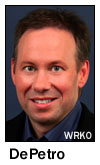

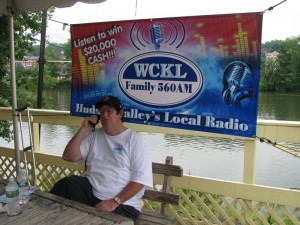
 So just as it did in Philadelphia, where Clear Channel killed off Spanish tropical “Rumba 104.5” in favor of modern rock “Radio 104” at WRFF (104.5), Clear Channel went to a modern rock format on the newly-renamed “FM 104one” in Hartford. And therein lies an irony: the “Radio 104” image that landed in Philly came right out of the old WMRQ in Hartford – an image valuable enough, apparently, that Clear Channel was keeping the old Radio 104 website alive in Hartford years after the format change to “Power,” complete with an automated webstream. (That site quietly went away after the “FM 104one” launch last week, replaced by a page that forwards to the new WPHH site.)
So just as it did in Philadelphia, where Clear Channel killed off Spanish tropical “Rumba 104.5” in favor of modern rock “Radio 104” at WRFF (104.5), Clear Channel went to a modern rock format on the newly-renamed “FM 104one” in Hartford. And therein lies an irony: the “Radio 104” image that landed in Philly came right out of the old WMRQ in Hartford – an image valuable enough, apparently, that Clear Channel was keeping the old Radio 104 website alive in Hartford years after the format change to “Power,” complete with an automated webstream. (That site quietly went away after the “FM 104one” launch last week, replaced by a page that forwards to the new WPHH site.) Galaxy Communications bought the Clear Channel stations, and the big prize that it’s keeping is classic rocker WOUR (96.9 Utica), which moved from Clear Channel’s downtown Utica studios on Genesee Street to Galaxy’s New Hartford studios. For the moment, we’re hearing that the syndicated Bob & Tom show remains in morning drive, with Galaxy talent from Syracuse voicetracking the rest of the day.
Galaxy Communications bought the Clear Channel stations, and the big prize that it’s keeping is classic rocker WOUR (96.9 Utica), which moved from Clear Channel’s downtown Utica studios on Genesee Street to Galaxy’s New Hartford studios. For the moment, we’re hearing that the syndicated Bob & Tom show remains in morning drive, with Galaxy talent from Syracuse voicetracking the rest of the day.


